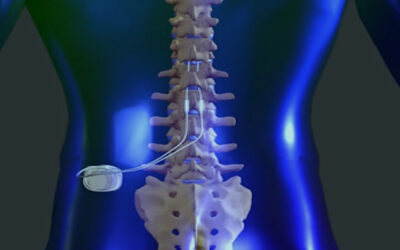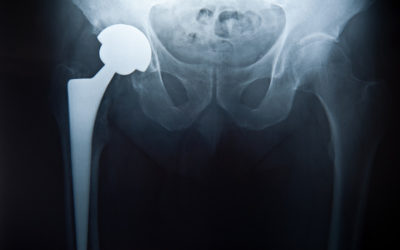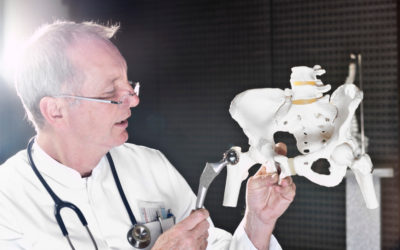Expectations of Total Joint Replacement for Hip Pain
If you have arthritis, a broken hip, or other problems with your hip, simple things like walking or getting in and out of a chair may be painful and challenging to do. In addition, your hip might be stiff, making it hard to get your shoes and socks on, and you might even feel uncomfortable while sleeping. A hip replacement may be a recommended treatment option if medications and other treatments do not help with your pain and discomfort. This blog discusses a total hip replacement and what you can expect should you decide to receive one.
Total Hip Replacement
The hip is one of the largest joints in the body. It is a joint with a ball and a socket. The acetabulum, part of the pelvis bone, makes the hole, and the ball is the top of the femur or thighbone, the femoral head.
In a total hip replacement, also called total hip arthroplasty, the damaged bone and cartilage are removed and replaced with artificial parts.
- The damaged femoral head is taken off, and a metal stem is put into the hollow center of the femur to take its place. The femoral stem can be cemented or “press fit” into the bone
- On the top of the stem, a metal or ceramic ball is placed. The damaged femoral head was taken off and replaced with this ball
- The damaged cartilage on the socket is removed, and a metal socket takes its place. The socket is held in place with screws or cement
- Between the new ball and the socket, a plastic, ceramic, or metal spacer is implemented to make a smooth surface for the ball to move on
Common Causes of Hip Pain
Arthritis is the most common cause of hip pain and disability that lasts for a long time. Most people with this disease have osteoarthritis, rheumatoid arthritis, or arthritis caused by an injury. Below are some of the many conditions that can damage the hip joint and sometimes lead to the need for a hip replacement:
- Osteoarthritis – This kind of arthritis is caused by age-related wear and tear. Most people who have it are 50 years old or older, and those with a history of arthritis in their family are more likely to get it.
- Rheumatoid arthritis is an autoimmune disease in which the synovial membrane gets red and thick. This long-term inflammation can hurt the cartilage, which can cause pain and stiffness
- Posttraumatic arthritis can happen after a broken hip or severe hip injury. Over time, the cartilage can get hurt, which can cause hip pain and stiffness
- Osteonecrosis – If you break or dislocate your hip, it could cut off the blood supply to the femoral head called osteonecrosis. If the bone doesn’t get enough blood, the surface of the bone may collapse, which can lead to arthritis. A few other diseases can also cause osteonecrosis
- Childhood hip disease – Some babies and kids have problems with their hips, and even if the issues are fixed when the child is young, they may still lead to arthritis as an adult. This happens because the hip may not grow as it should, affecting joint surfaces.
What to Expect from Total Hip Replacement Surgery for Hip Pain
The surgery usually takes between 1 and 2 hours. Your orthopedic surgeon will remove the damaged cartilage and bone and then put in new metal, plastic, or ceramic implants to realign and fix your hip, depending on what was discussed for your treatment.
After surgery, you’ll spend a few hours in a recovery area while the effects of the anesthesia wear off. After that, the medical staff will monitor your blood pressure, pulse, level of alertness, pain or discomfort, and whether or not you need pain medication.
What is Recovery from Hip Replacement Like?
How well you take care of yourself at home during the first few weeks after surgery will significantly impact how well your recovery goes. In addition, you must follow your doctor’s instructions after your procedure to ensure the best possible outcome.
Pain Management
Medications are often given after surgery to help with pain for a short time. There are many kinds of painkillers, such as opioids, nonsteroidal anti-inflammatory drugs, acetaminophen, and local anesthetics, that can help manage pain. Your doctor may use a mix of these painkillers to help you feel better while you recover.
Wound Care
You may have stitches, staples, or a suture running along or under your skin. The stitches or staples will be taken out about two weeks after surgery.
Please don’t get the wound wet until it has healed and dried thoroughly. You can keep putting a bandage on the wound to keep it from getting irritated by your clothes.
Activity
Exercise is essential to taking care of yourself at home, especially in the first few weeks after surgery. After surgery, you should be able to do most of your typical light daily tasks again in 3 to 6 weeks. For a few weeks, it’s common to feel some pain when moving around and at night.
Your activity plan should include a walking program that starts at home and moves outside to help you get around more easily. Then, once your doctor says it’s okay, you can do other everyday things around the house again, like sitting, standing, and climbing stairs.
It would be best if you did specific exercises several times daily to get your hip moving again and strengthen it. You will probably be able to do the exercises on your own, but in the first few weeks after surgery, a physical therapist may help you at home or in a therapy center.
Are you experiencing hip pain and finding that other treatments didn’t work for you? Considering a hip replacement? Please contact us at (803)256-4107 to set up an appointment, and check out our locations to see which one best fits your needs.




